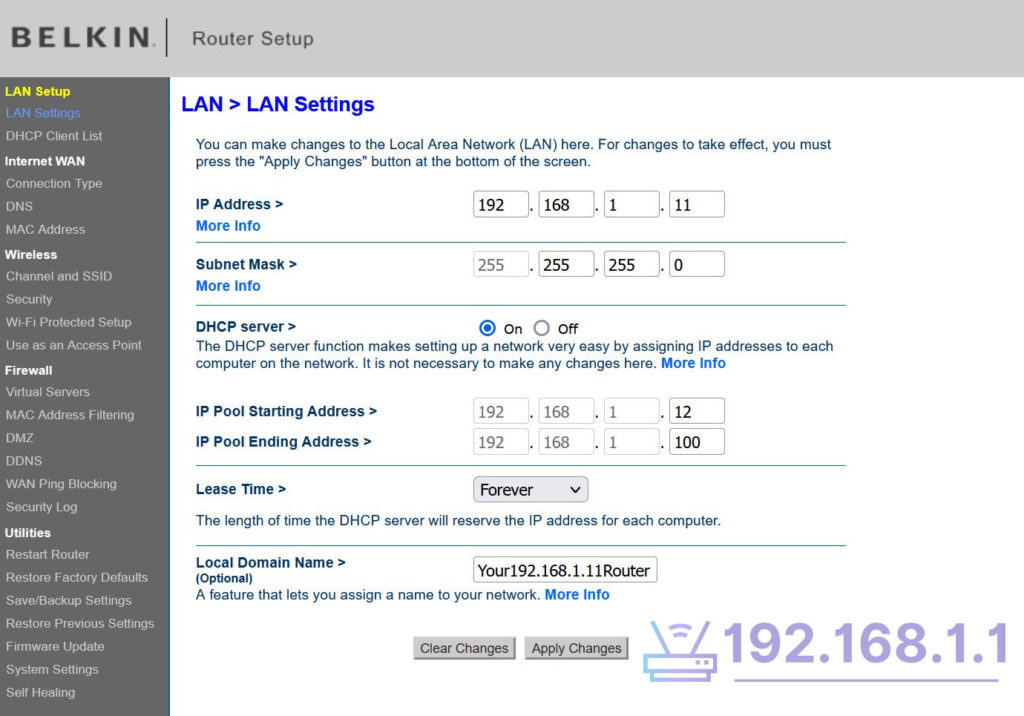What is 192.168.1.11 and how to login as admin in your router
192.168.1.11 is what is known as a private Internet Protocol (IP) address. It is one of the several default private IPs that the manufacturer of your wireless router assigns to all devices they produce. The private IP is the backbone of your wireless network at home or the office. All internet-capable devices that you connect to the router’s Wi-Fi find the device at this address – 192.168.1.11. The router, on the other hand, assigns the laptops, phones, printers, and tablets you connect to it private IPs based on 192.168.1.11 – 192.168.1.12, 192.168.1.13, 192.168.1.14, and so on. If you want to find out if your router’s default private IP is indeed 192.168.1.11, all you have to do is look at the label on the back of the device, or in the user manual.
Private IP vs Public IP
While 192.168.1.11 is your private IP, you need another one – called public – to connect to the internet. In contrast to 192.168.1.11, it is your Internet Service Provider (ISP) that assigns the public IP. It is your network’s address on the World Wide Web. Let’s say that you want to open a website on your tablet. First, you need to connect the device to your wireless network at 192.168.1.11. If it is the first device you connect to the Wi-Fi at this particular moment, the table gets the private IP 192.168.1.12. The tablet sends the request for the website’s page to the router, which takes the data package and sends it to the website’s public IP. The site prepares the data package to be sent to your router’s public IP. In a way, the public (also known as outward-facing) IP is like a PO Box for your home or office wireless network. Once the router receives the data package you need, it redistributes it to the tablet using the network of private IPs based on 192.168.1.11. At the end of the process, you can see the website load on your device’s display.
Why change your private IP
One of the main reasons you might want to change your router’s private IP from 192.168.1.11 to something else is that almost all routers from the same brand and model share it. The default private IP is not unique to your device, which makes your network vulnerable to hacker attacks and other unauthorized use. A foolproof way to add a layer of protection over your network is to change the private IP. Just make sure to write down or remember the new IP you choose, because once you hit save, you won’t be able to access your router at 192.168.1.11 any longer.
How to access the admin panel at 192.168.1.11
To change your private IP and make other adjustments to your wireless network, you need to access your router’s admin panel.

Open a browser of your choice (like Chrome, Safari, Opera), and type 192.168.1.11 in the address bar. Hit Enter and if you are connected to your router’s Wi-Fi, you will see a prompt to provide the device’s username and password. Don’t worry if you are not sure what they are. Chances are that the default logins you find on the label on the router’s back are what you need. It is possible that while setting up your network, the ISP has changed the default logins. If that is the case, you will have to contact them, or factory reset the router. The factory reset will roll back any changes made to the wireless’s settings, which means you will be able to use the default private IP and logins to get into the admin panel. To factory reset your 192.168.1.11 router, locate the reset button at the back. Press and hold the button until the lights on the device starts flashing. Once they go dim and light up again, the process is complete.
Optimizing your Wi-Fi at 192.168.1.11
You will find yourself in the 192.168.1.11’s admin menu. There you can make several adjustments to get the most out of your Wi-Fi:
- Change the default private IP from 192.168.1.11 to something else from the Network Settings sub-menu
- Change the name and password of your wireless network
- Change the default logins you use to access the admin menu to 192.168.1.11, or your newly chosen private IP.
While you are at it, you may check if your router has a built-in VPN function. Many modern devices do, and it is highly advisable to turn them on. The VPN hides your public IP from sites and services across the internet. In this way, you will be able to protect your identity and other sensitive information from malicious parties around the world.
